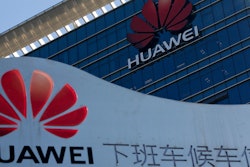Very soon, we are told, Internet of Things (IoT) sensors will instrument all the steps in the supply chain, providing unprecedented transparency to suppliers and buyers alike. The key, of course, is getting information—any information—from one company to another in a way that is timely, trustworthy, and actionable by software; a surprisingly difficult problem.
I wouldn’t recommend using enterprise blockchain for everything. It’s monstrously more complex than a database, and magnitudes slower. But it has a strong fit anywhere multiple companies must work on a shared set of information. It seems almost tailor-made for supply chain solutions. It is just another hammer in the developer’s toolbox. While you wouldn’t use a hammer to perform dental work, transparent insight into your supply chain is the nail to the blockchain hammer.
When we hear the word blockchain, the first thing many of us think of is Bitcoin and Ethereum. This is no surprise; cryptocurrencies tend to get a good deal of media attention these days. Enterprise blockchain platforms, on the other hand, have mostly stayed out of the headlines. Nonetheless, corporations invest a great deal of resources developing these platforms, primarily for the purposes of solving inter-organizational cooperation at scale. In fact, IDC estimates that investment in enterprise blockchain platforms in 2018 will exceed $2 billion.
At the moment the enterprise blockchain landscape is dominated by two major platforms: Hyperledger and Quorum. Companies from a wide array of disciplines are building on these platforms. Technology companies are usually at the forefront, but other industries, such as finance, automotive, healthcare, and logistics are active participants in these ecosystems. Senior leadership of these companies has decided enterprise blockchain is a useful technology that helps them streamline their information processing and data-sharing operations.
Perhaps the most well-known application of enterprise blockchain to supply chain logistics is Walmart’s use of IBM’s Food Trust Solution—where their pilots demonstrated that they could track the provenance and handling of goods—and reduce the time from a week to under three seconds. Now the benefits to Walmart here are clear: they can better predict a spoiled good, get their hands around food-safety problems, and streamline the person-to-person interactions forming the status quo.
Walmart is so excited about these benefits that now the use of the blockchain platform is turning into a new requirement for their suppliers. These corporate behemoths are driving the adoption of enterprise blockchain technology through size and ability to impose, and it won’t be too long before technologists just come to view this as yet another standard component in enterprise software systems. Practically, this imposition means that Walmart has worked hard to make shuttling suppliers data onto the platform as easy as possible—developing an array of capabilities for integration with enterprise resource planning (ERP) software and the like.
Much like the fact that the temperature in the cooled trucks moving heads of lettuce is important to Walmart, various data such as serial numbers and quality assurance results are important in manufacturing. Blockchain-based systems will provide the glue between companies to enable timely action over that data. Companies looking to explore and capitalize on these benefits early are taking a reasoned approach.
Look across your company and identify a paperwork and time-intensive process, where that process involves coordination across your corporate boundaries (like, vendors), and then work with those other companies on a pilot initiative. These new software systems will evolve over time, and their maturation and the resulting increased confidence will let these systems rapidly take over the boundaries between companies.
The reality is, however, that these new software platforms are relatively immature, and just like there are no strong playbooks for enterprises looking to leveraging them, we lack the playbooks for safe development and operation of these systems. Like any other technology, a rise to adoption brings with it interest from attackers.
For blockchain components acting on the boundaries of companies, punching through firewalls to interconnect organizations will be of extreme interest to attackers. It’s important that security information evolves along-side the increased adoption of blockchain components, and doing so will only result from first-class investment in understanding what security properties these platforms have, how to write code defensively, and how to safely operate these components.
If you have a large technology R&D budget, odds are that you already have one or more initiatives experimenting with enterprise blockchain, and nothing in this article comes as a surprise. Smaller organizations should keep an eye out for large suppliers, or customers, working on enterprise blockchain solutions that will likely become business as usual in the future. Get involved with pilots to ensure your interests are represented by the systems that will inevitably form the backbone of inter-organizational collaboration.
Travis Biehn is a technical strategist and research lead at Synopsys.






















